Research Report 23-02 
In vitro Sensitivity of Fusarium Circinatum and Rhizoctonia spp. to Fungicides Tested for Control of Fusiform Rust
Annakay Newell
Table 1. Fungicides tested in this study.
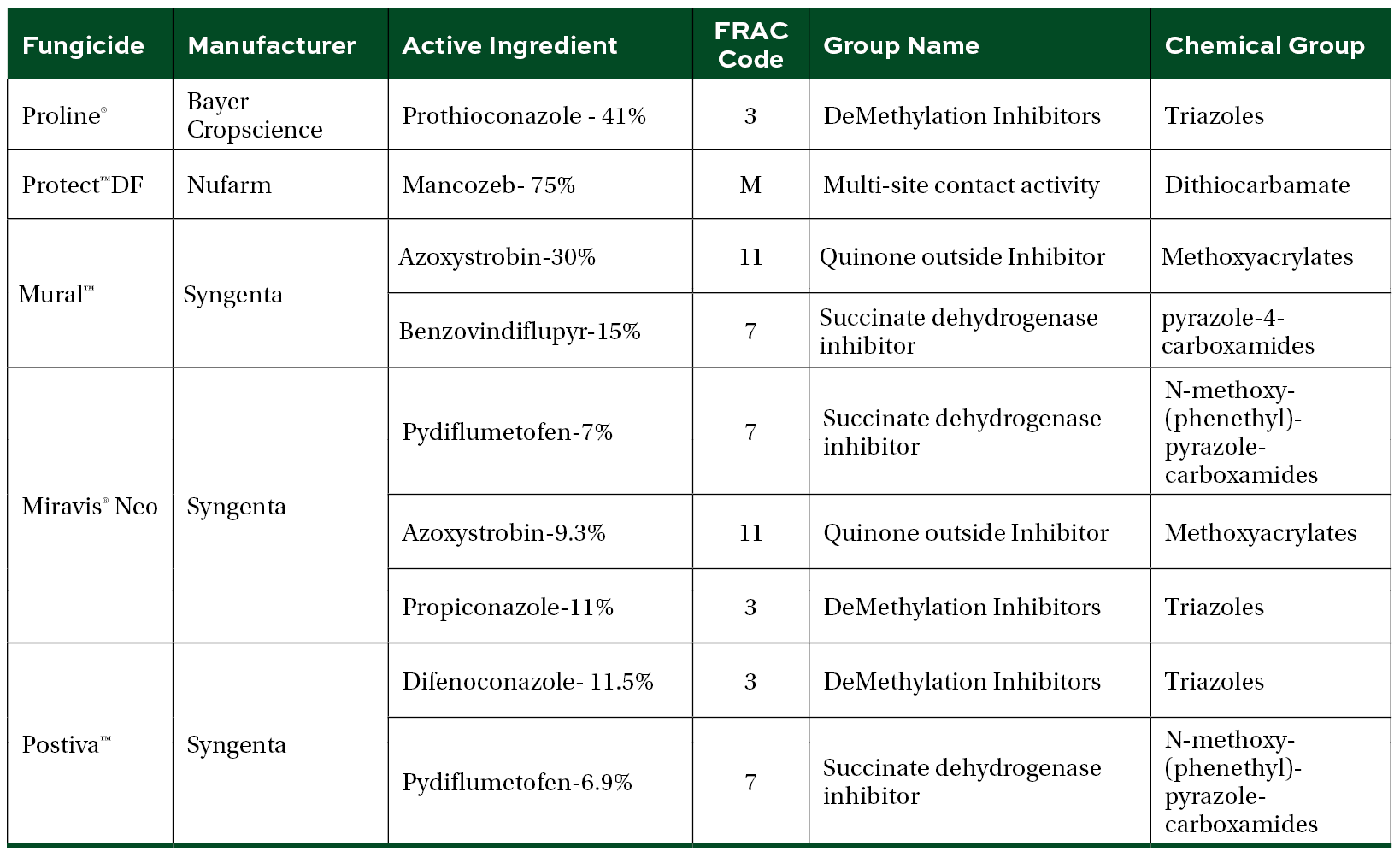
Table 2. Field rate of fungicides used in this study.

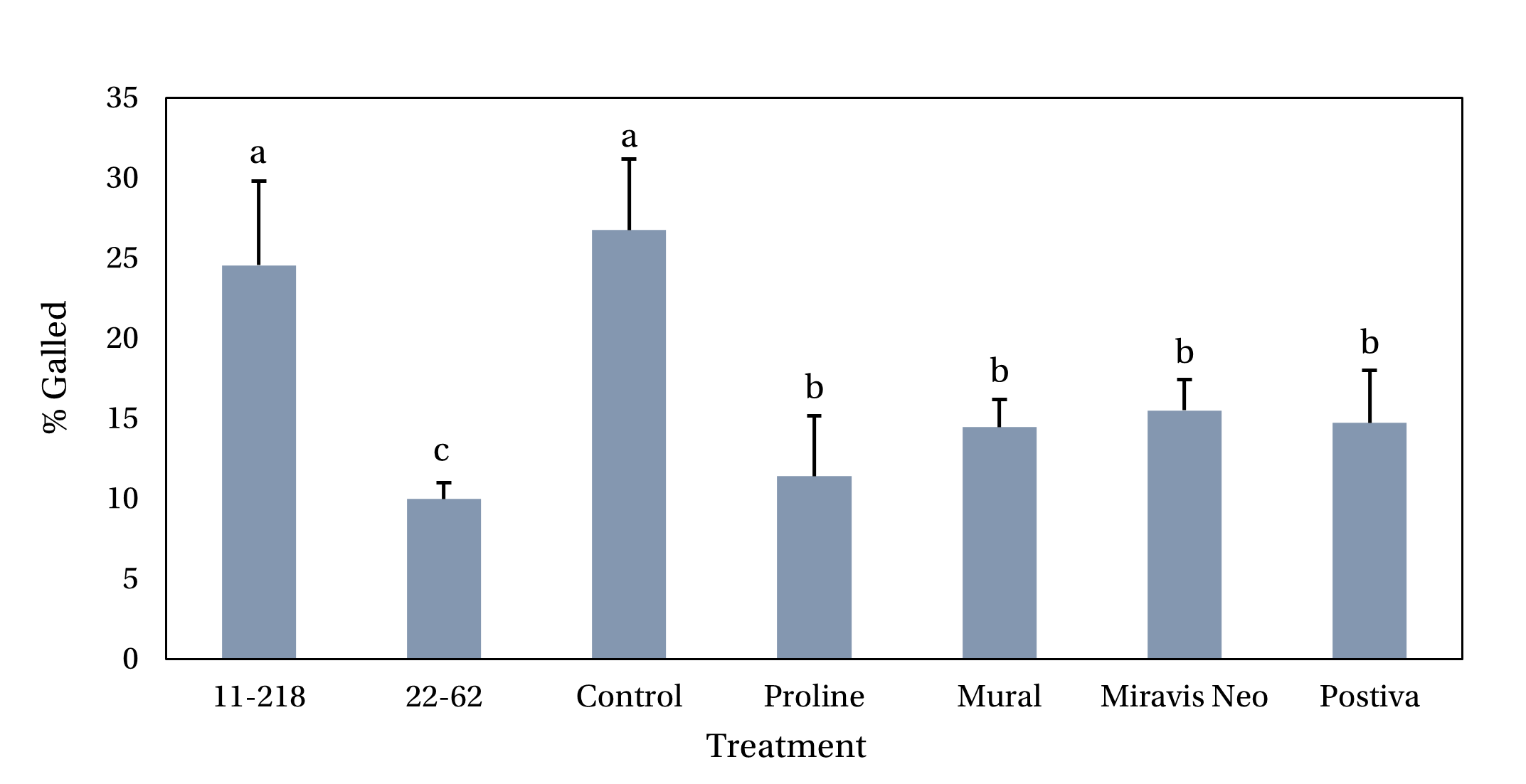
Figure 1. Incidence of rust galls on loblolly pine seedlings left untreated or treated with fungicides and challenged with basidiospores of Cronartium quercuum f.sp. fusiforme in the greenhouse. 11-218 is a susceptible and 22-62 a resistant control seedlot. (Different letters on bars indicate significant differences at p < 0.05)
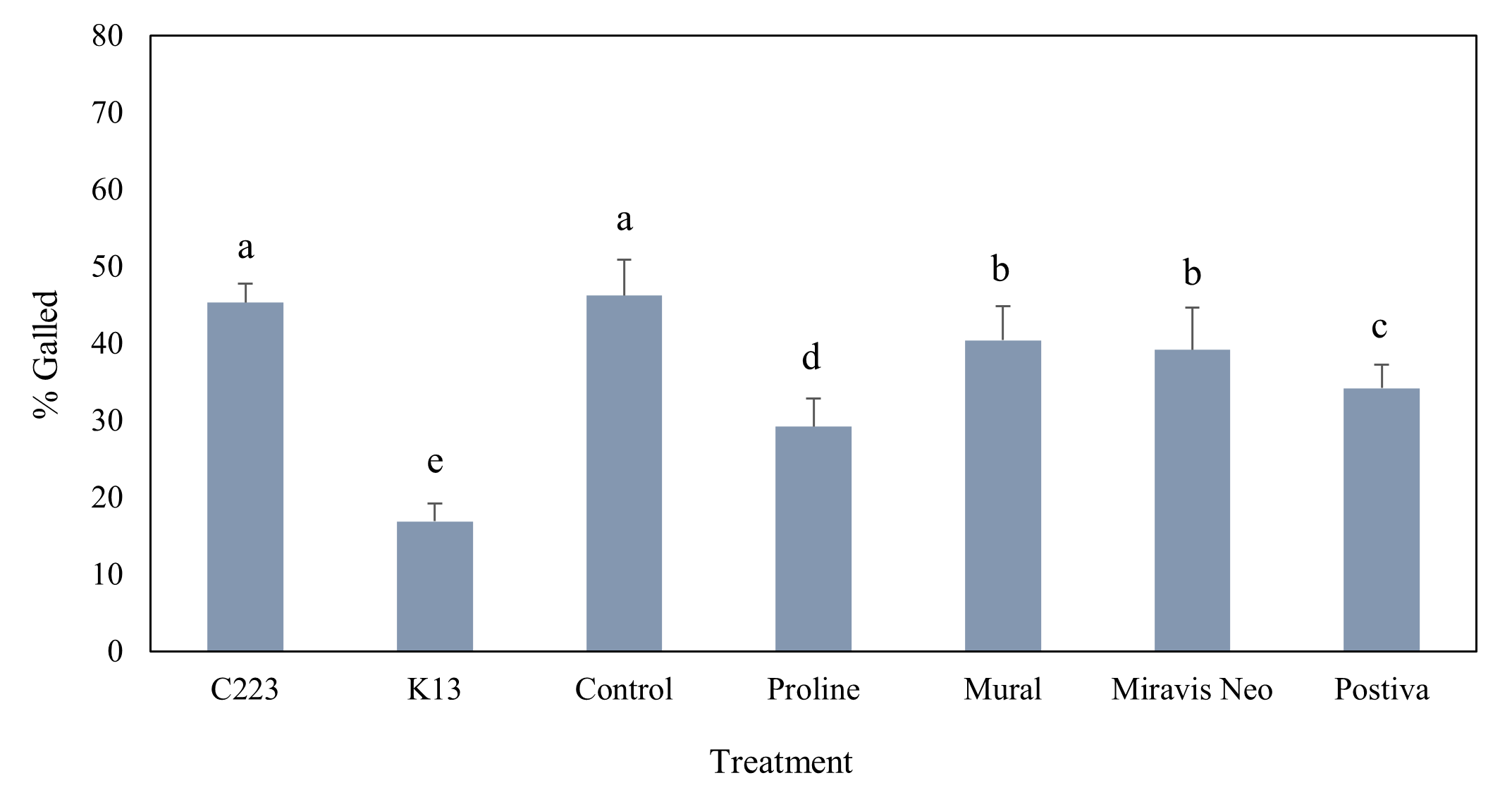
Figure 2. Incidence of rust galls on slash pine seedlings left untreated or treated with fungicides and challenged with basidiospores of Cronartium quercuum f.sp. fusiforme in the greenhouse. C223 is a susceptible and K13 a resistant control seedlot. (Different letters on bars indicate significant differences at p < 0.05)

Figure 3. Reduction of Fusarium circinatum mycelial growth after 7 days on potato dextrose agar amended with the field rate equivalent of the maximum and minimum concentration of fungicides that an isolate might be exposed to in the field.

Figure 4. Reduction of Rhizoctonia spp. mycelial growth after 7 days on potato dextrose agar amended with the field rate equivalent of the maximum and minimum concentration of fungicides that an isolate might be exposed to in the field.
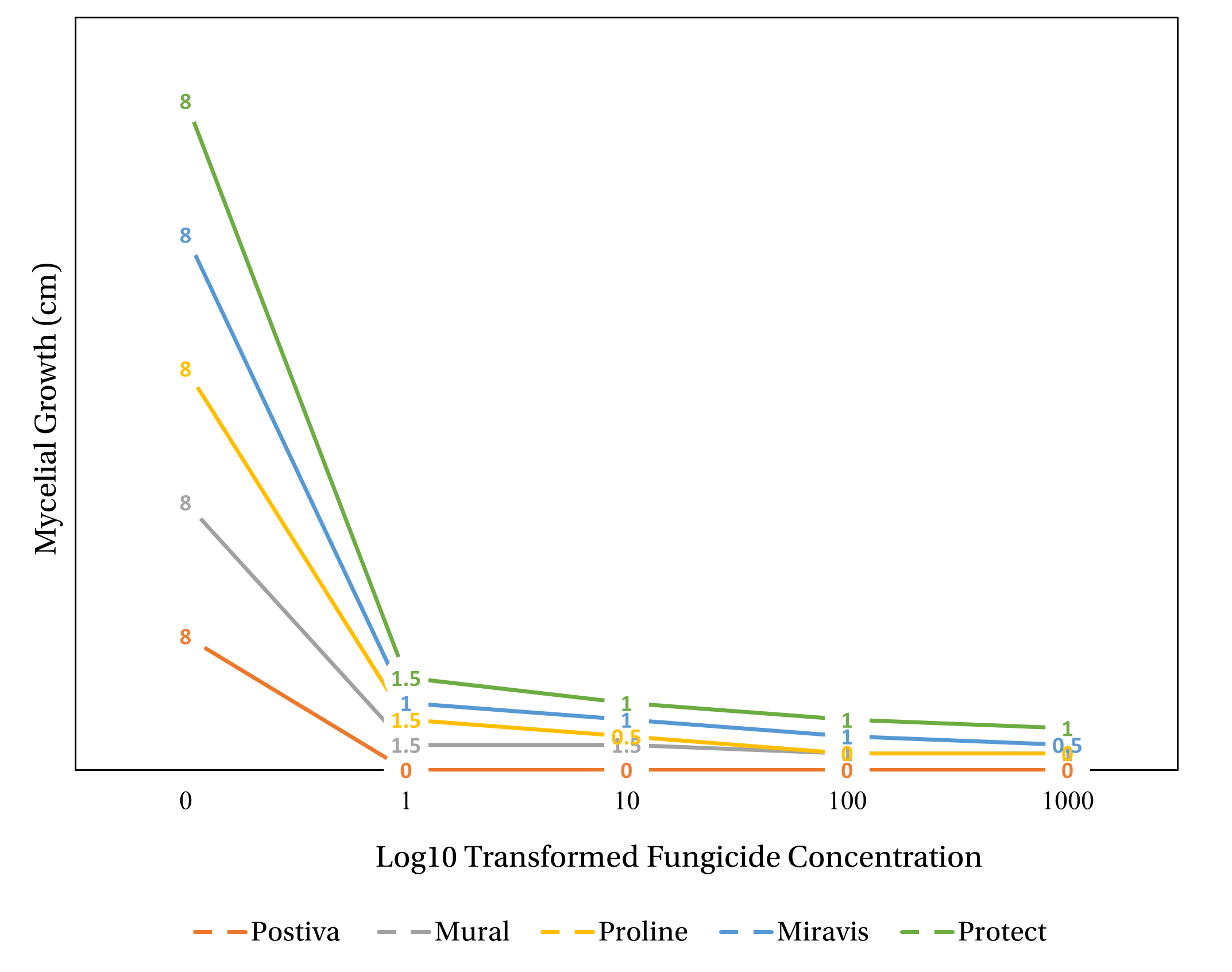
Figure 5. Fusarium circinatum mycelial growth inhibition after 7 days on potato dextrose agar amended with four concentrations of each fungicide from the maximum to minimum field rate equivalent.
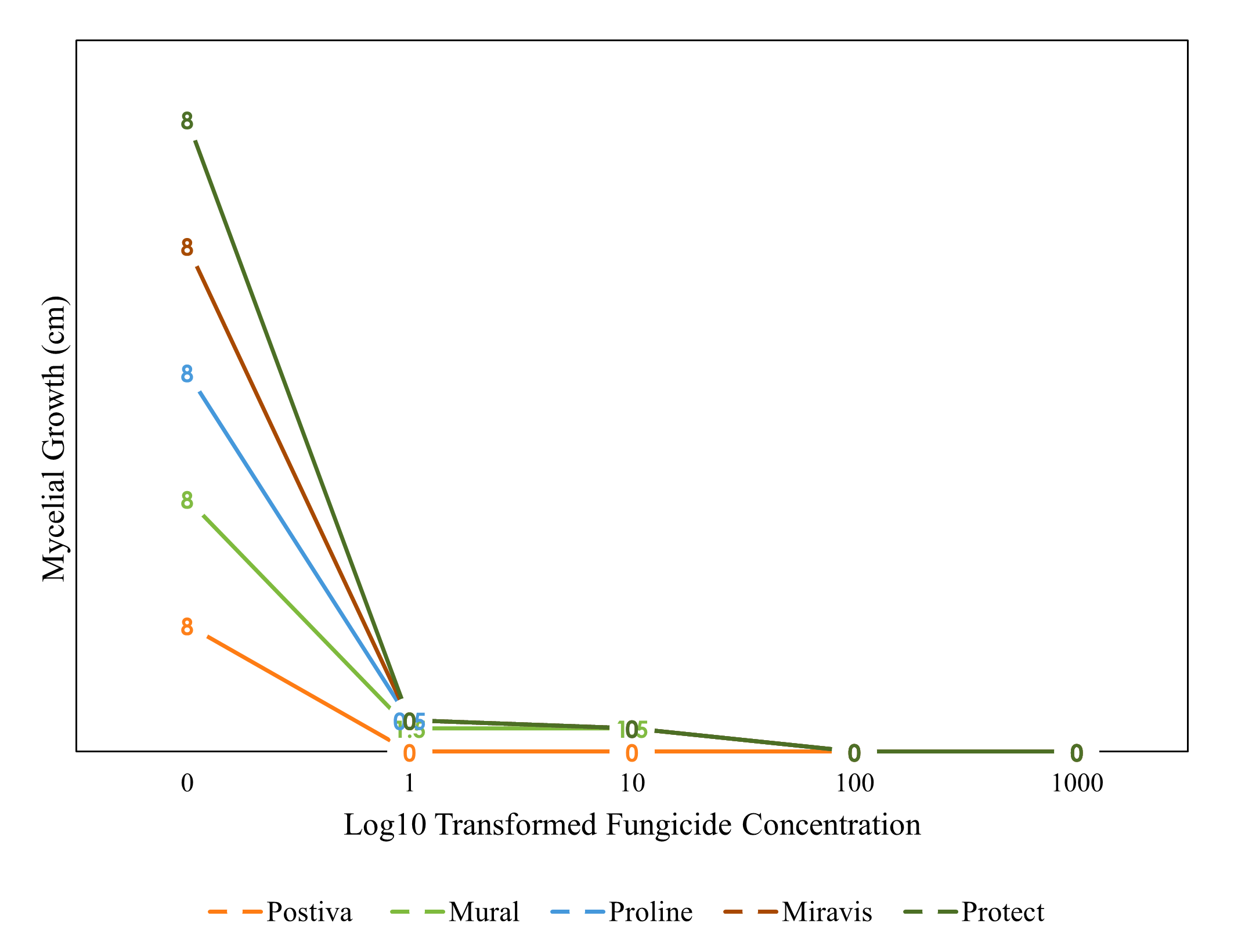
Figure 6. Rhizoctonia spp. mycelial growth inhibition after 7 days on potato dextrose agar amended with four concentrations of each fungicide from the maximum to minimum field rate equivalent.
Introduction
Fusiform rust, caused by the fungal pathogen Cronartium quercuum f.sp. fusiforme, has been one of the most important diseases in southern forest nursery pine production for decades. The disease can cause significant economic losses if not properly managed. The Southern Forest Nursery Management Cooperative (SFNMC) led efforts to register the fungicides Triadimefon (Bayleton®) in 1980 and Prothioconazole (Proline®) in 2011 for fusiform rust management. Since then, the incidence of fusiform rust has significantly decreased. Bayleton® was removed from the market by the Environmental Protection Agency in 2012 and Proline® is currently the only fungicide labelled specifically for the pathogen. One benefit of Proline® is that it also controls other important fungi in forest nurseries such as Fusarium circinatum and Rhizoctonia spp. It can also be used as a seed treatment and greatly reduces losses from damping off pathogens.
The SFNMC tests alternative chemistries for fusiform rust control annually. The efficacy of these fungicides is tested in a greenhouse by artificially inoculating seedlings with basidiospores of the pathogen. Fungicides that reduce gall formation in a greenhouse setting are subsequently tested under operational conditions in the nursery, to assess its effectiveness under natural inoculum pressures. Chemistries that provide broad-spectrum control, however, are more beneficial and cost effective for nursery managers. The aim of this study, therefore, was to conduct in vitro studies to evaluate the sensitivity of Fusarium circinatum and Rhizoctonia spp. to fungicides that are tested for the control of Cronartium quercuum f.sp. fusiforme.
Materials and Methods
Working cultures of Fusarium circinatum and Rhizoctonia spp. were transferred onto potato dextrose agar (PDA) medium and incubated at room temperature for 6 days. 5-mm agar plugs were excised from the leading edge of growth and placed on PDA amended with Protect™DF, Mural™, Miravis® Neo, and Postiva™. Proline® and an unamended control were used for comparison (Table 1). Three plates each were amended with the labelled maximum field rate equivalent of each fungicide and dilution series were done to attain three additional concentrations to three orders of magnitude lower than the maximum rate (Table 2). The radial growth of each colony was measured by taking the diameter and subtracting the original plug diameter of 5mm. The average radial growth of the three replicates was then taken to represent each treatment.
Results and Discussion
Under normal circumstances the effective concentration at which the fungal growth is inhibited by 50% (EC50 value) would be used to compare the reduction in mycelial growth relative to the untreated control. In this case however, the concentrations tested resulted in greater than 50% reduction, so this approach was not used. Instead, inhibition of fungal growth was directly assessed.
Postiva™ completely inhibited growth of Fusarium circinatum and Rhizoctonia spp. at the lowest concentration (Figures 5 and 6). It was also the most effective of the new chemistries tested in greenhouse studies for the control of fusiform rust (Figures 1 and 2). Miravis® Neo also exhibited good control in both studies. Mural™ was the least effective in inhibiting the growth of Fusarium circinatum and Rhizoctonia spp. in vitro, and growth can be seen even at the highest concentrations (Figures 3 and 4).
Proline®, Postiva™, and Miravis® Neo have comparable results and all three fungicides have active ingredients in the triazole chemical group. Postiva™ and Miravis® Neo also have the new ADEPIDYN® technology, a trademark for the active ingredient pydiflumetofen.
Conclusions
Postiva™ and Miravis® Neo have broad-spectrum activity and appear to be good candidates for alternatives to Proline®. The SFNMC plans to perform a second greenhouse evaluation of these products in 2024, depending on USFS Rust Laboratory support.




